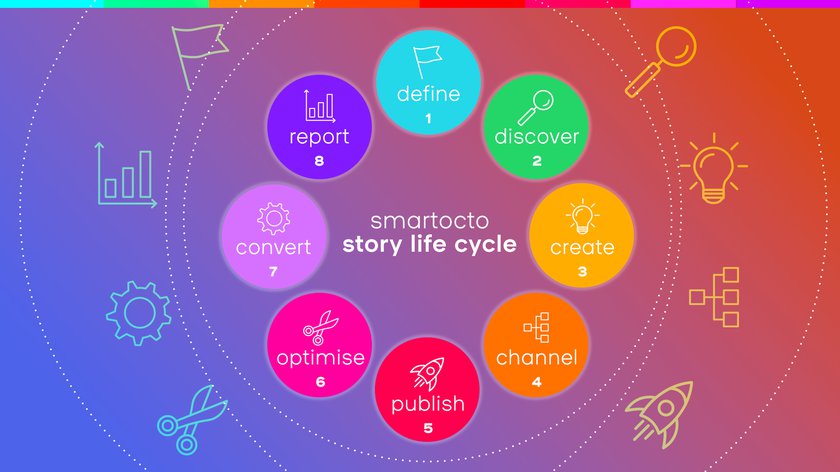What exactly is the Story Life Cycle that you see us mention here and there?? It’s great that you’ve landed on this page, because this is the place to get a brief overview.
At the core of the newsroom is the story. Your aim is to amplify that story. Our mission is to help you do that.
The Story Life Cycle© is a framework that helps you see the creation, publication and review of content as an ongoing process. It encourages you to think holistically about what, how and why you publish, and the learnings of each cycle feed back into the next. And, because it was developed by us, smartocto, it’s not just a nice idea. These stages are supported by world-class editorial analytics, user needs processes, newsroom-friendly tools and features, and actionable notifications.
It’s an ongoing process that will help you grow relevance, attention, loyalty and all the good things your business strives for.


